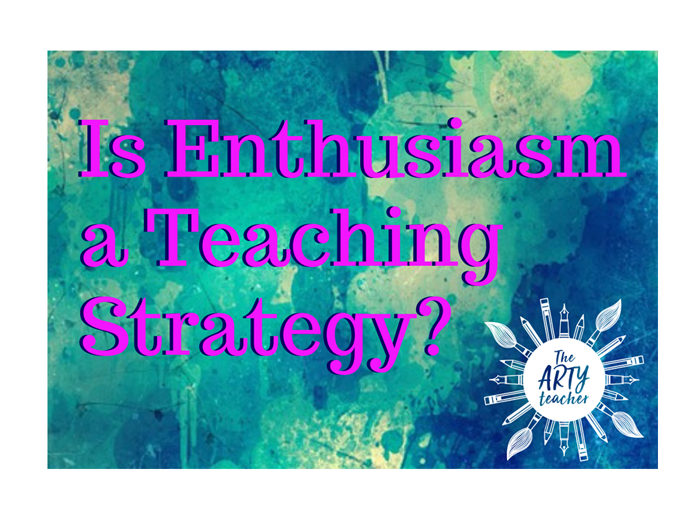Enthusiasm is a teaching strategy. It helps to engage learners, stimulate discussion and also goes a long way to help maintain discipline. I was recently asked to speak to a trainee teacher about how to be more enthusiastic, and this got me thinking about this topic and various strategies.
My first thought was to ask my students who they thought were enthusiastic teachers within my school. They came up with a list of names which were no surprise to me. I asked in what way did they show their enthusiasm? They told me it was the way they used their arms, the way they spoke and that they had wide eyes. Tone-of-voice and body-language seem to be key.
I’ve always found in my career the best sort of teacher training or advice is one that has left me with a list of strategies to try. Based on the feedback from my students and my own experience, this is what I discussed with the trainee. We filled in the ‘zingers’ together.
Zinger
A zinger is a striking, enthusiastic opening statement. Start your lesson with a zinger to immediately strike a positive note and spark your students’ interest in the topic. Use an upbeat tone of voice.
- ‘This is going to be a brilliant lesson because…’
- ‘I love teaching this lesson because…’
- ‘What really fascinates me about this is…’
- [Name] is my favourite artist/historian/scientist because…’
Asking yourself how you can start each lesson with a zinger is a good habit.
Whole Class Praise / Owning the Room
Walking around the room giving whole-class-praise is a great way to give a positive vibe whilst walking near students who might not be as engaged as they should and maintaining pace and asserting your authority all in one go. What? You can do all that just by walking around the room giving praise? Yes, you can. Useful phrases might be:
‘There’s a good working atmosphere in this room.’
‘This table’s got it…This tables got it, fantastic.’
‘Brilliant, most of you are moving onto the second step.’
‘I’m seeing accurate/detailed/analytical/t
It might not even be true, progress might be poor, but if students think everyone else is making good progress, they will want to do the same.
Eye Contact
This makes me think of the phrase ‘wide-eyed enthusiasm’. When you are speaking to the whole class make sure you go from student to student giving them direct eye contact. What you are saying is important and you want to draw students in. Make a conscious point of doing this until it becomes a habit.
Tone of Voice
Do you know what you sound like? Here technology can come to the rescue. Use an iPad or phone to record some or all of your lesson. An engaging voice uses a variety of volume, pitch and tone. Are you monotone? If you are speaking with enthusiasm there should be a certain amount of excitement in your voice. How do you think you come across to students?
Body-Language
Now, this is a hard one to learn. Some people are just more gestural than others. Trying to force yourself to wave your arms around enthusiastically might just make you look like a mad person. Watch some TED talks for your subject, or watch Barack Obama’s speech that is credited with making him president and see what people do with their hands. Try to do this yourself. Practice in front of the mirror. If you feel comfortable, could someone film your lesson? Perhaps a fellow trainee teacher? Just make sure about the rules of filming within your school.
Observing Enthusiastic Teachers
Ask your students who they think are enthusiastic teachers in your school and then see if you can arrange to observe these teachers. You are always going to learn useful strategies from observing great teachers in action.
In Summary, plan to…
- Write ‘zingers’ into your lessons plans.
- Introduce whole-class praise or do more of it.
- Make a point of using eye-contact.
- Record your voice. Analyse the recording and improve if necessary.
- Watch inspiring speakers on TED Talks. Analyse their body language. Adopt what you feel comfortable with.
- Observe enthusiastic teachers. Let your students recommend them!
*Zinger. A striking or amusing remark.
Teacher enthusiasm: Dimensionality and context specificity Enthusiasm and the effective modern academic Students’ and mathematics teachers’ perceptions of teacher enthusiasm and instruction What Makes Lectures ‘Unmissable’? Insights into Teaching Excellence and Active Learning





Leave a Reply